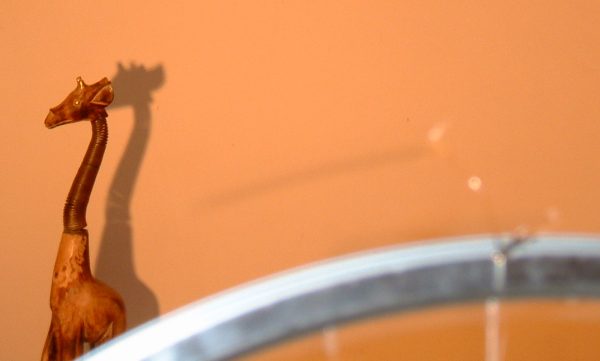I guess that you are not a scientist. In a good scientific discussion
you should point out uncertainties in the evidence and the assumptions
that you are making.
Can't use my Bad Buoy wrote:Ernst Lippe wrote:There are several possible explanations: and you give four
The important question here is: could a bug cause a picture like this.
It is not important which of these explanations is true. They are
all perfectly reasonable explanations and if you wanted to raise
a serious counter argument you should show that neither of them
can explain the observed effect.
most of us don't really know how a flying insect looks in a flash photo. that's why we need to continue this discussion with some simple, logical experiments
Not really, this picture is sufficiently similar to other pictures
of flying insects (especially the "flying rods").
Virtually all? insects can and do fly in straight lines. But most people will probably miss insects that are flying longer distances. Actually, the only time when there are not flying in straight lines is when they are searching (e.g. for food), and there is probably nothing interesting for an insect near the camera because it is located at the coast. if so uninteresting, why do any insects live at the coast at all?
Insects form the largest group in the animal kingdom, so it is very
difficult to make statements about "all" insects. Insects do live on
the coast of course, but in most cases they will avoid the sea. So
like migrating birds they tend to follow the coast line when they
encounter the sea on their journey.
Anyhow, the point is that insects can and do fly in
almost straight lines.
Anyhow the actual length of the streak is at most a few meters (and probably much less)
We don't know if the flash occured ...We still
don't know how fast the flash was. If it was indeed 1/1000 s the
movement blur should have been greater than it is in the picture (assuming
that the insect moves at a uniform speed demonstrations
needed).
No, some simple observations on the image are sufficient. The total
length of the streak is approximately 1100 pixels, when the flash
lasted 1 ms the length of the motion blur should be 22 pixels and
that is more than we see in the picture.
But even a flash of 1/2000 s is short enough to be consistent with the observed motion blur experimentation needed. Now the minimum exposure time of this camera is 1/2000 s, and it seems reasonable to assume that the flash should also be able to handle this. 10usec to 1 millisecond
There is nothing unreasonable about this assumption, it fits very
well with other data about flash lengths.
We don't know the size of the insect, and it is also very difficult to say how far removed it was from the camera. experimentation needed
Why? It really does not matter whether this effect was caused by
a small bug at a short distance or by a larger bug at a larger
distance.
But even a very short
path (say 0.1 m) would cause the streak if the insect is close
enough.demonstration called for
This is obvious if you know enough about the physics involved in
photography.
We don't know the orientation of the insect.
But it does not really matter, in either orientation it is
possible that an insect could have caused this image.
Your comments were full of alot of what we don't yet know, assumptions, and 'what ifs'
But that is how true science works, it sounds as though you are not really
comfortable with it.
Anyhow, all of the assumptions of the bug theory seem perfectly reasonable,
unlike the assumptions of the rival theories.
There would only be a pressing need for further investigation
if some of these assumptions were very unlikely.











